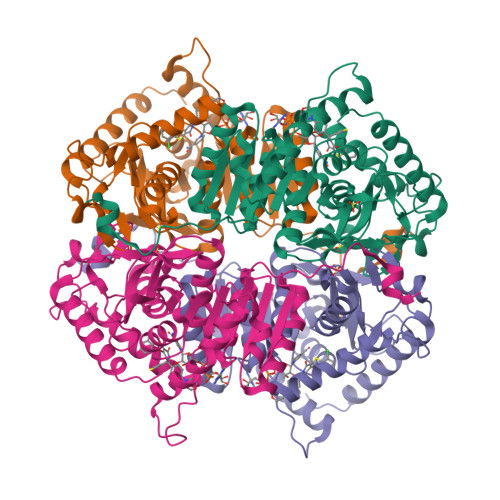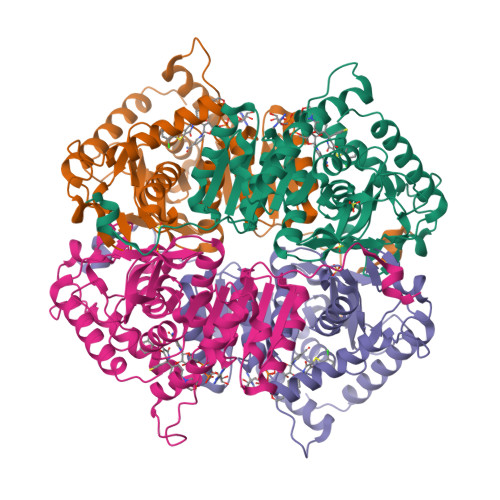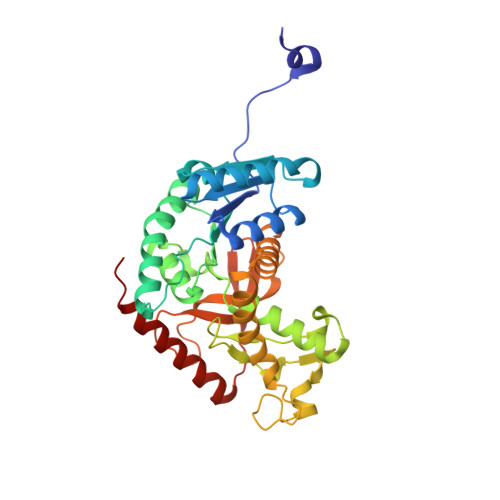Metabolic plasticity underpins innate and acquired resistance to LDHA inhibition.
Boudreau, A., Purkey, H.E., Hitz, A., Robarge, K., Peterson, D., Labadie, S., Kwong, M., Hong, R., Gao, M., Del Nagro, C., Pusapati, R., Ma, S., Salphati, L., Pang, J., Zhou, A., Lai, T., Li, Y., Chen, Z., Wei, B., Yen, I., Sideris, S., McCleland, M., Firestein, R., Corson, L., Vanderbilt, A., Williams, S., Daemen, A., Belvin, M., Eigenbrot, C., Jackson, P.K., Malek, S., Hatzivassiliou, G., Sampath, D., Evangelista, M., O'Brien, T.(2016) Nat Chem Biol 12: 779-786
- PubMed: 27479743
- DOI: https://doi.org/10.1038/nchembio.2143
- Primary Citation of Related Structures:
4ZVV - PubMed Abstract:
Metabolic reprogramming in tumors represents a potential therapeutic target. Herein we used shRNA depletion and a novel lactate dehydrogenase (LDHA) inhibitor, GNE-140, to probe the role of LDHA in tumor growth in vitro and in vivo. In MIA PaCa-2 human pancreatic cells, LDHA inhibition rapidly affected global metabolism, although cell death only occurred after 2 d of continuous LDHA inhibition. Pancreatic cell lines that utilize oxidative phosphorylation (OXPHOS) rather than glycolysis were inherently resistant to GNE-140, but could be resensitized to GNE-140 with the OXPHOS inhibitor phenformin. Acquired resistance to GNE-140 was driven by activation of the AMPK-mTOR-S6K signaling pathway, which led to increased OXPHOS, and inhibitors targeting this pathway could prevent resistance. Thus, combining an LDHA inhibitor with compounds targeting the mitochondrial or AMPK-S6K signaling axis may not only broaden the clinical utility of LDHA inhibitors beyond glycolytically dependent tumors but also reduce the emergence of resistance to LDHA inhibition.
Organizational Affiliation:
Discovery Oncology, Genentech, South San Francisco, California, USA.





















